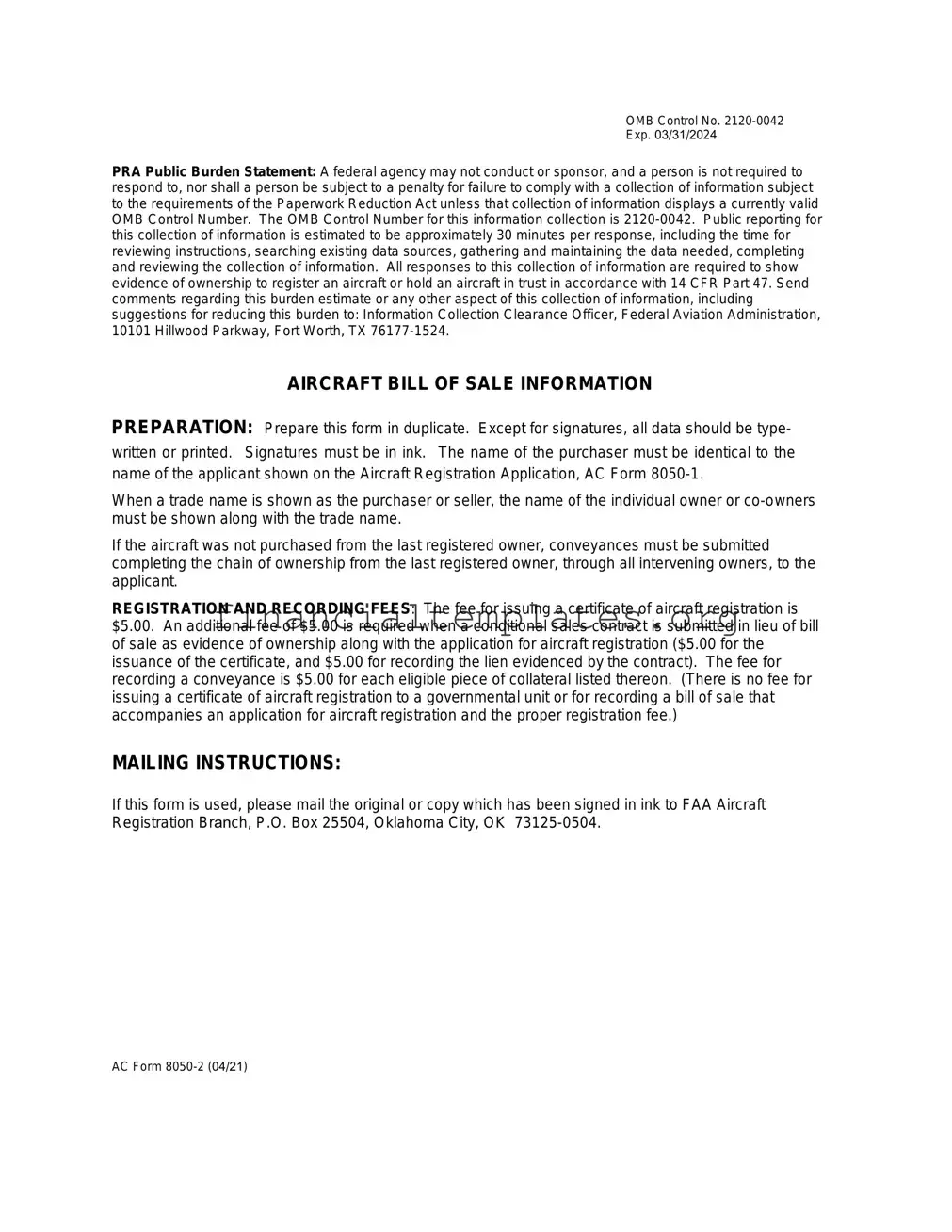OMB Control No. 2120-0042
Exp. 03/31/2024
PRIVACY ACT OF 1974 (PL 93-579) requires that users of this form be informed of the authority which allows the solicitation of the information and whether disclosure of such information is mandatory or voluntary; the principal purpose for which the information is intended to be used; the routine uses which may be made of the information gathered; and the effects, if any, of not providing all or any part of the requested information.
Title 49 U.S.C. 44101 requires the registration of each United State civil aircraft as a prerequisite to its operation. The applicant for registration must submit evidence of ownership that meets the requirements prescribed in Part 47 of the Federal Aviation Regulations.
This form identifies the aircraft being purchased, and provides space for purchaser and seller identification and signature. This is intended only to be a suggested bill of sale form which meets the recording requirements of the Federal Aviation Act, and the regulations issued thereunder. In addition to these requirements, the form of bill of sale should be drafted in accordance with the pertinent provisions of local statutes and other applicable federal statutes.
The following routine uses are made of the information gathered:
(1)To support investigative efforts of investigation and law enforcement agencies of Federal, state, and foreign governments.
(2)To serve as a repository of legal documents used by individuals and title search companies to determine the ownership of an aircraft for registration purposes.
(3)To provide aircraft owners and operators information about potential mechanical defects or unsafe conditions of their aircraft in the form of airworthiness directives.
(4)To provide supporting information in court cases.
(5)To serve as a data source for management information for production of summary descriptive statistics and analytical studies in support of agency functions for which the records are collected and maintained.
(6)To respond to general requests from the aviation community or the public for statistical information under the Freedom of Information Act or to locate specific individuals or specific aircraft for accident investigation, violation, or other safety related requirements.
(7)To provide data for the automated aircraft registration master file.
(8)To provide documents for development of the aircraft registration statistical system.
(9)To prepare an aircraft register in electronic media as required by ICAO agreement containing information on aircraft owners by name, address, N-Number, and type aircraft, used for internal FAA safety program purposes and also available to the public (individuals, aviation organizations, direct mail advertisers, state and local governments, etc.) upon payment of applicable user charges reimbursing the Federal Government for its costs.
(10)The aircraft records maintained by the FAA Aircraft Registry are public records and are open for inspection in room 122 of the Registry Building, Mike Monroney Aeronautical Center, 6425 S. Denning, Oklahoma City, Oklahoma 73169. Individuals interested in such information may make a personal search of the records or may avail themselves of the services of a company or an attorney.

